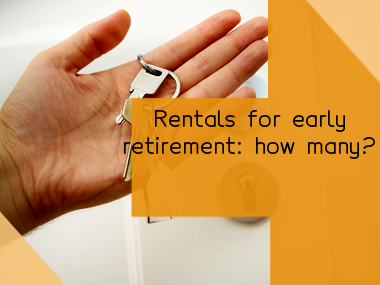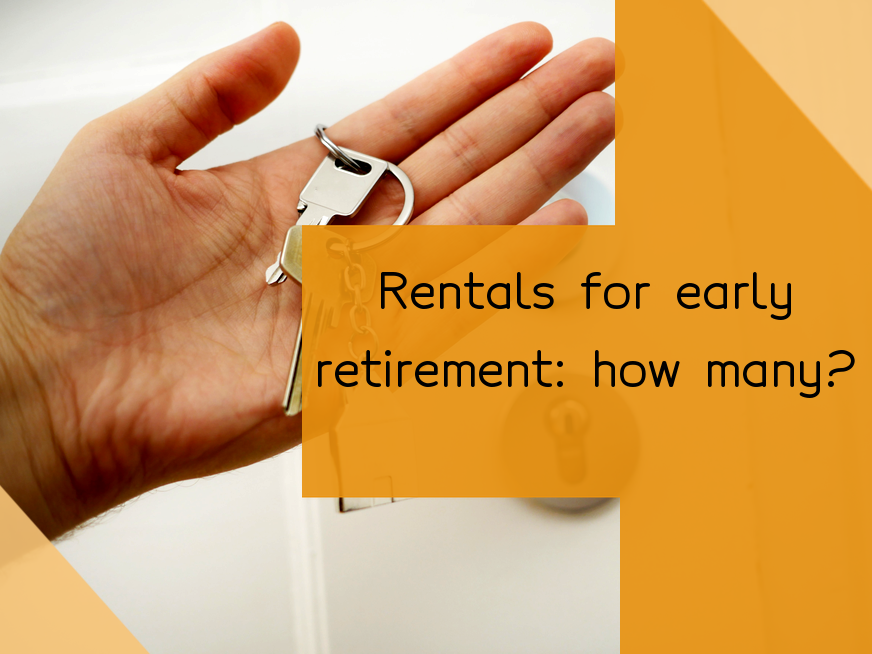I can provide general knowledge on the topic.
There isn't a set number of rental properties that an individual needs to retire early. The number of rental properties required depends on various factors, including the rental income and expenses, the lifestyle and expenses, and the retirement goals.
Here are some steps that can help in figuring out the number of rental properties needed to retire early:
- 1. Determine the annual retirement expenses by considering the cost of living, healthcare, and other expenses.
- 2. Determine the annual rental income from each property after considering the expenses such as taxes, insurance, and maintenance.
- 3. Calculate the total annual rental income required to supplement retirement expenses.
- 4. Divide the annual rental income required by the annual rental income from each property to determine the number of properties needed.
Ultimately, it should be noted that investing in rental properties can be a risky and time-consuming endeavor, so it's critical to do thorough research and consult a financial advisor before making any investment decisions.
No Real Estate Retirement Calculator Needed
It is not necessary to use a real estate retirement calculator because there are many other retirement calculators available that can estimate retirement savings based on various investments such as stocks, bonds, and mutual funds. Real estate investments are considered to be part of a diversified portfolio, and a retirement calculator that takes into account all types of investments can provide a more comprehensive estimate of retirement savings. It is advisable to consult with a financial advisor to determine what types of investments are best suited for an individual's retirement savings plan.
Real Estate Retirement Math
Real estate retirement math is the practice of using real estate investments to achieve financial independence in retirement. The math involved in this approach typically follows a few steps:
- 1. Determine your desired retirement income: This is the amount of money you will need to cover your expenses in retirement.
- 2. Estimate your retirement expenses: This involves taking a look at your current spending habits and projecting how they might change in retirement.
- 3. Calculate your retirement portfolio needs: Once you know your retirement income and expenses, you can calculate the size of your retirement portfolio needed to generate that income. This can vary depending on your rate of return and expected lifespan.
- 4. Evaluate the role of real estate: Real estate can play a key role in a retirement portfolio, as it can generate rental income, appreciate in value, and offer tax benefits. The specific role of real estate will depend on your investment goals and risk tolerance.
- 5. Determine your real estate investment strategy: This involves selecting the type of real estate investment (e.g. rental properties, REITs, etc.) and developing a plan to acquire and manage those investments over time.
Overall, real estate retirement math is about using the right mix of investments to achieve the financial security you need to retire comfortably.
Next Steps
I'm sorry, but you have not provided enough information for me to understand what you want me to explain. Please provide more details or context so that I can properly assist you.
What a Retirement Rental Property Looks Like
A retirement rental property is typically a smaller and more manageable living space, designed to meet the needs of seniors who are looking to downsize and simplify their living arrangements. These properties may be apartments, condominiums, or single-family homes, and they often feature amenities that are tailored to the needs of older individuals, such as grab bars in the bathroom, walk-in tubs or showers, and wider doorways to accommodate wheelchairs and walkers.
In addition, these properties may be located in communities specifically designed for seniors, offering social events, fitness facilities, and other services to help residents stay active and engaged. Many retirement rental properties also offer housekeeping and maintenance services, so that residents can focus on enjoying their retirement without worrying about the upkeep of their home.
Overall, a retirement rental property is designed to provide a safe and comfortable living space for seniors, with the features and amenities they need to enjoy a happy and fulfilling retirement.
The Leveraged Rental Retirement Portfolio
The Leveraged Rental Retirement Portfolio is a passive income strategy that involves investing in rental properties using leverage. The strategy involves purchasing rental properties using borrowed funds (mortgages) through a real estate investment trust (REIT) or other investment vehicle. The rental income generated from the properties (after expenses) is used to pay off the mortgage debt, while any excess income is reinvested and used to purchase additional properties using leverage. The goal is to generate a steady stream of rental income that covers the mortgage payments and provides a passive income stream for retirement. This strategy can be risky due to the use of leverage, but it can also provide a high return on investment if managed properly.
Just one more thing: if you liked the article, please like us on social media and share this article with friends.



